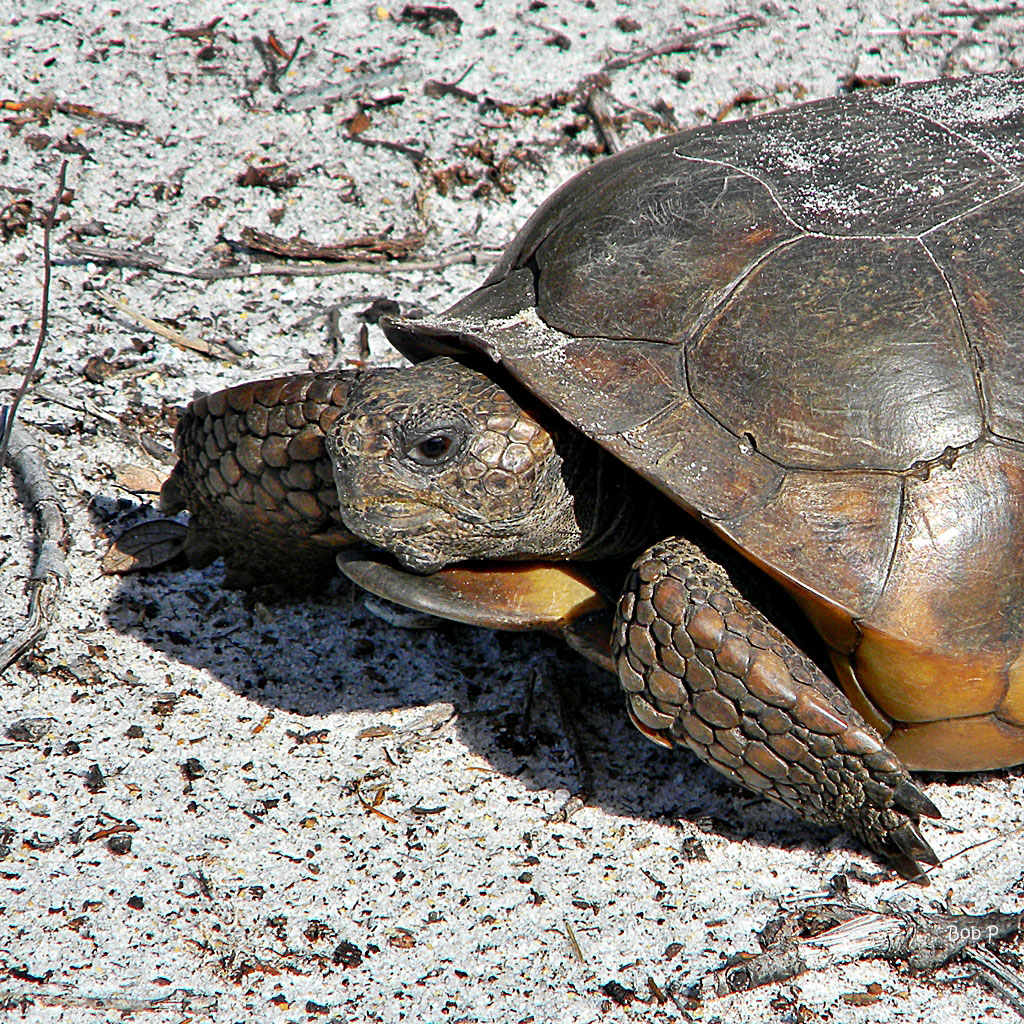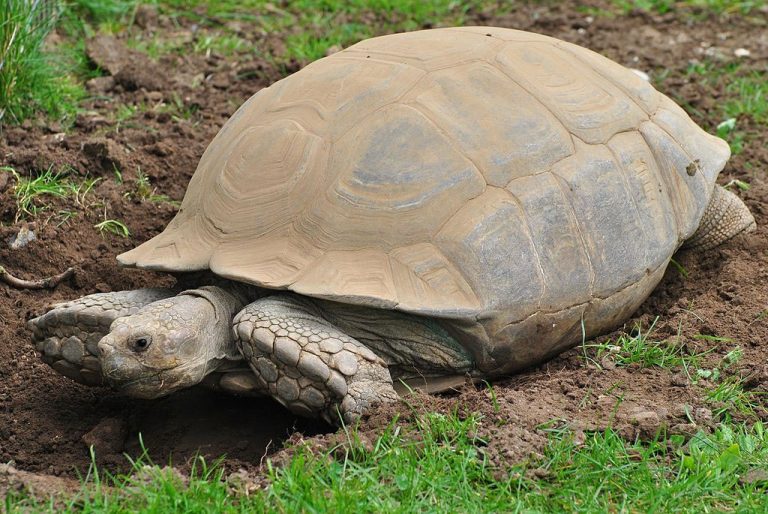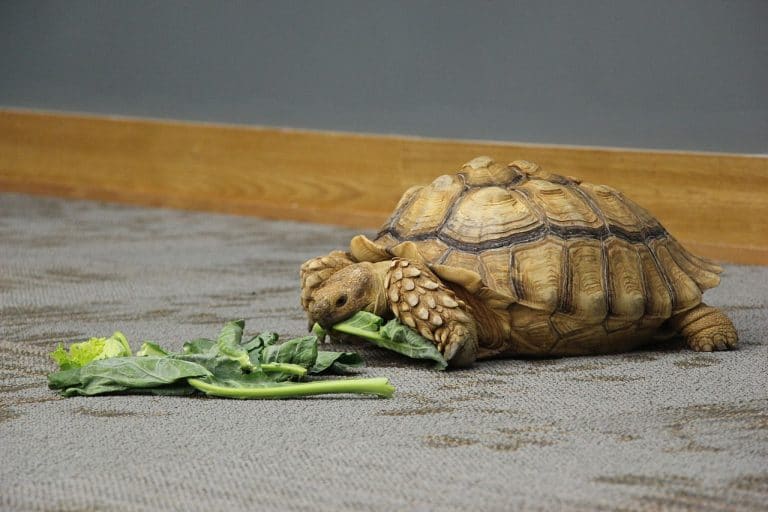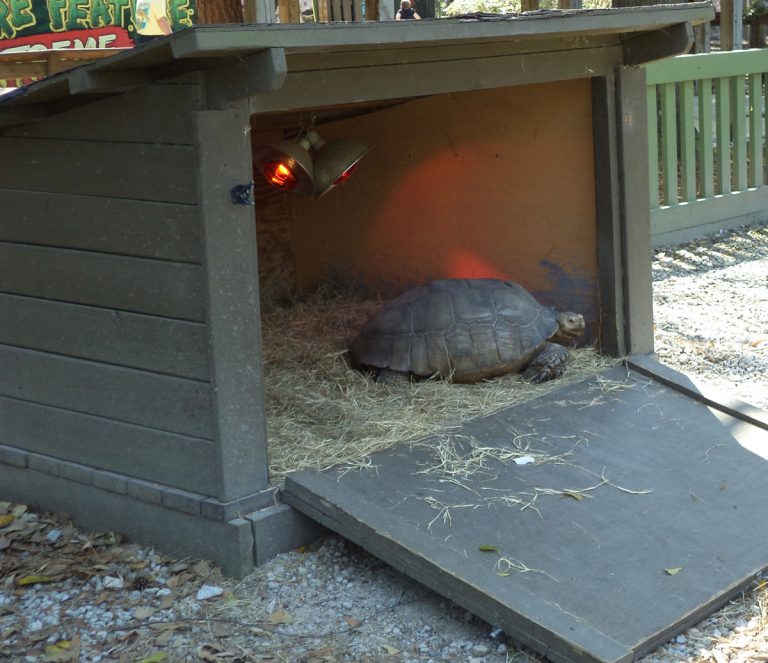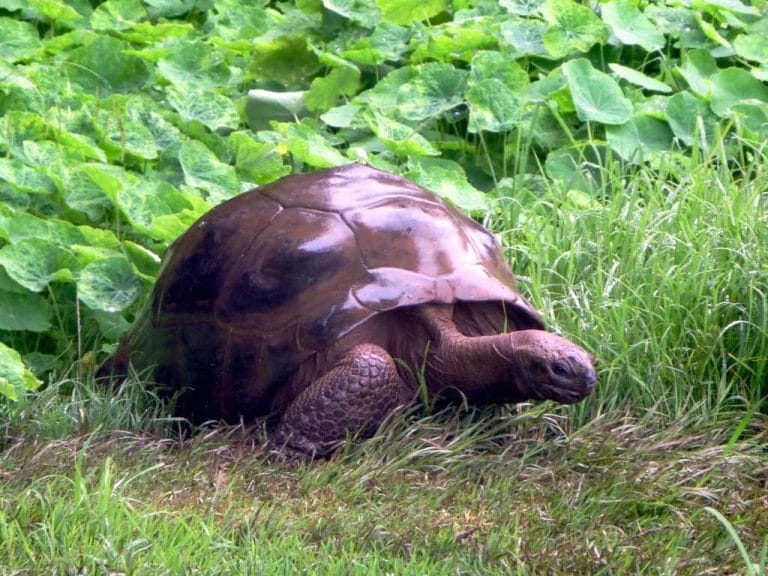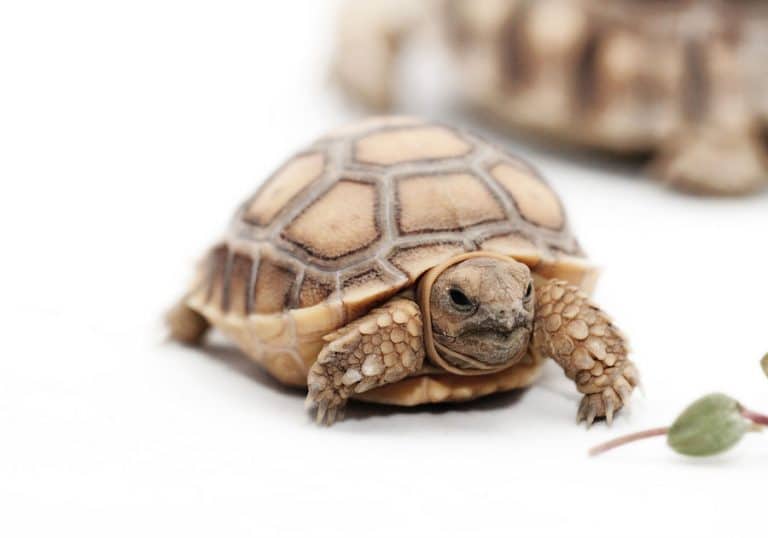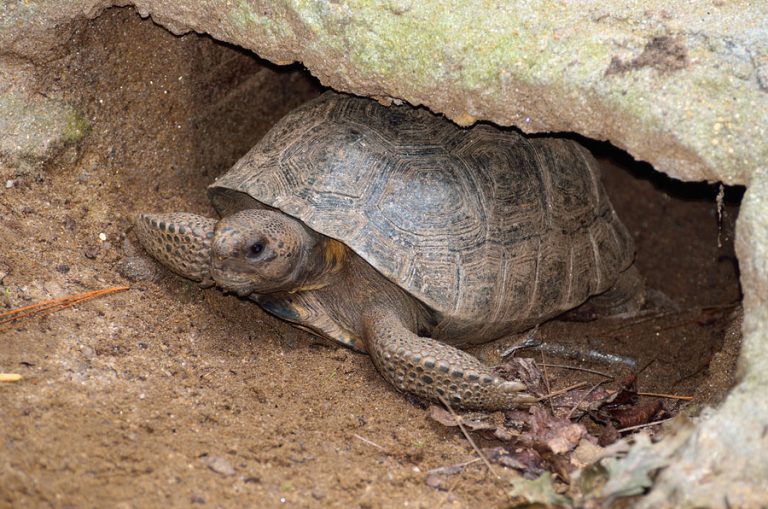Gopher Tortoise
Scientific Classification
| Kingdom: | Animalia |
| Phylum: | Chordata |
| Class: | Reptilia |
| Order: | Testudines |
| Suborder: | Cryptodira |
| Superfamily: | Testudinoidea |
| Family: | Testudinidae |
| Genus: | Gopherus |
| Species: | G. polyphemus |
| Binomial name: | Gopherus polyphemus |
The gopher tortoise, Gopherus Polyphemus digs holes that act as a refuge for 360 other species of animals, as such, it is noted as a keystone species. Destruction of their habitat and attack by predators scare them. This tortoise represents the genus Gopherus, one that is native to North America. The Gopher tortoise represents the state tortoise of Florida and the state reptile of Georgia.
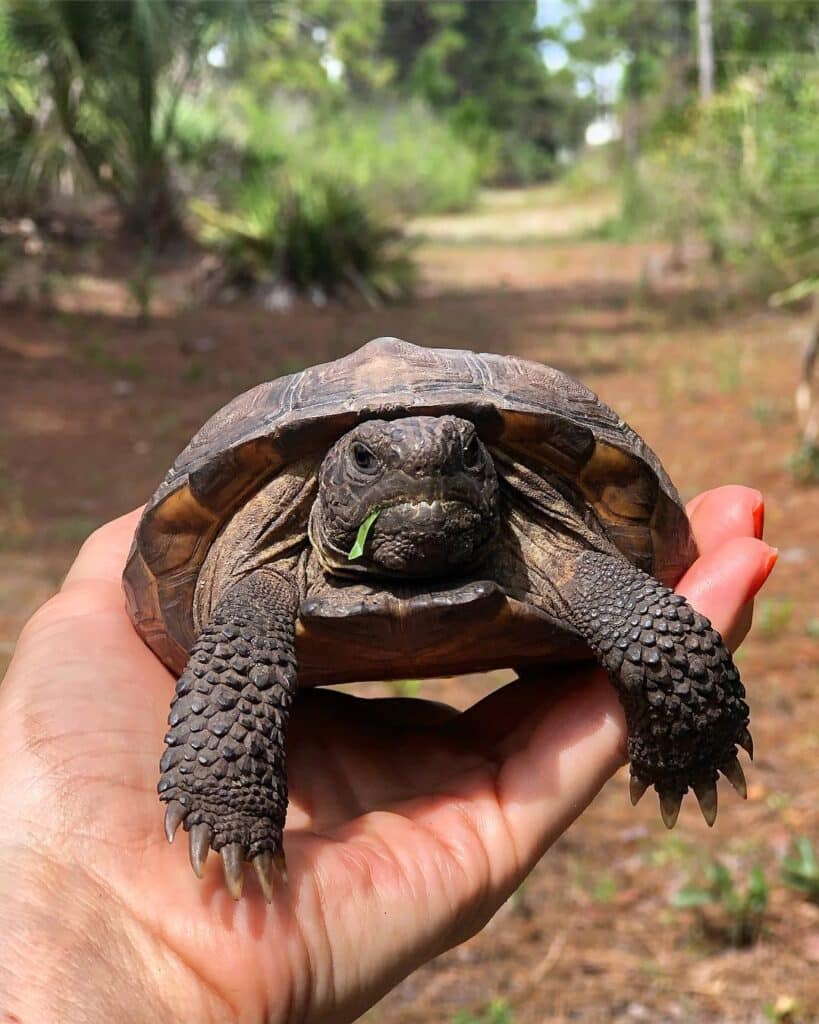
Anatomy
With regard to color, the gopher tortoise is a simple looking tortoise. They are colored either gray or dark tan. Their hind legs resemble that of elephants and the forelimbs are flat and broad, resembling a shovel. The roof of the shell is pretty flat. The matured gopher tortoise is a dull looking creature; this is just the opposite to that of the dazzling colored hatchlings.
The gopher tortoise is a pretty big terrestrial tortoise. Their front feet are quite suited for burrowing, whereas their hind legs are like that of elephants. The majority of the tortoises is like this.
When their shells grow up to 9 inches and when they are 12 to 15 years of age, they attain sexual maturity.
Behavior
Gopher tortoise belongs to the few varieties that dig holes to a depth of 10 feet and to a length of 40 feet and as wide as their width. Besides, it acts as a home for them. The Florida mouse, indigo snake, burrowing owl and the gopher frog make use of these burrows
Habitat
These Gopher tortoises live for a long time. These reptiles belong to the uplands of Florida and the southern province of Georgia, Mississippi, South Carolina, Alabama and the peak of Eastern Louisiana and also pastures, forests and yards. They search for food from plants that grow on low lands and dig holes for shelter.
As a Pet
Breeding
At the age of 10 to 15 years the shells of the gopher tortoise grows to a length of 9 inches (23 cm). This is when they attain maturity. Their normal mating period is from February to September and their climax period is May to June. Depending on the size of their body, they lay from 3 to 14 clutches of eggs in sand mounds adjacent to their burrows. Once mating is over, the female searches for a sand mound or a sunny spot and lays almost 13 to 15 eggs in a place. The hatching period of the eggs is almost 70 to 100 days. The juvenile gopher remains in its mother’s burrow since they prefer spending a lot of time over there.
Housing
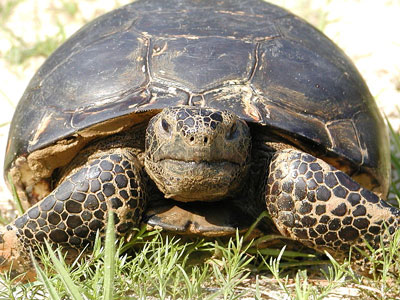
Provide a housing for your gopher tortoise that has sufficient space so that they are able to reside, sleep and take rest. The most suitable size of the enclosure for the female gopher tortoise is 0. 65 ha, and that for a male is 1.9 ha. Sandy soil is most convenient for digging, making holes and taking shelter, hence ensure that it is available in the enclosed space. Make the housing glamorous by providing grass that is not poisonous to them; besides, confirm that the walls are sufficiently high enough to prevent them from escaping. Keep away from anything that is poisonous. Two separate cages are good, one of them to take food and the other to take shelter. It will prevent infection through bacteria.
Food
It is imperative that you give your pet gopher tortoise fresh food. They are herbivores and prefer short type of grass in their diet. Legumes and grasses are ideal for them. Feed your gopher tortoise in addition, with flowers and fruits of prickly pear cactus.
The gopher tortoise that stays in captivity for example, in a zoo, prefers having plenty of fruits and vegetables. Certain cultivated food which the gopher tortoises prefer to eat are sliced carrots, broccoli, bananas, green beans, watermelon, alfalfa, endives, cantaloupe, white potatoes, escarole, zucchini, escarole, apples and sweet potatoes. They habitually eat tortoise chow.

Having discovered a fondness for insects while pursuing her degree in Biology, Randi Jones was quite bugged to know that people usually dismissed these little creatures as “creepy-crawlies”.

